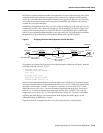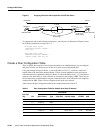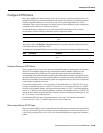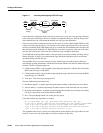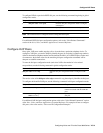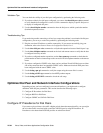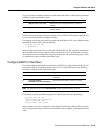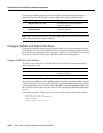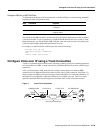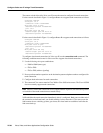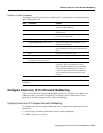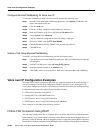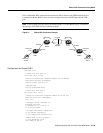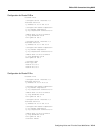
Configure Voice over IP using a Trunk Connection
Configuring Voice over IP for the Cisco 3600 Series VC-35
Configure VAD for a VoIP Dial Peer
To disable the transmission of silence packets for a selected VoIP peer, use the following commands
beginning in global configuration mode:
The default for the vad command is enabled; normally the default configuration for this command
is the most desirable. If you are operating on a high bandwidth network and voice quality is of the
highest importance, you should disable vad. Using this value will result in better voice quality, but
it will also require higher bandwidth requirements for voice.
For example, to enable VAD for VoIP dial peer 108, enter the following:
dial-peer voice 108 voip
destination-pattern +14085551234
vad
session target ipv4:10.0.0.8
Configure Voice over IP using a Trunk Connection
A trunk is a communication line between two switching systems; typically, the switching equipment
in a central office and a PBX. A trunk connection is a permanent physical layer (wire), point-to-point
connection.
Voice over IP simulates a trunk connection by creating virtual trunk tie lines between PBXs
connected to Cisco 2600 and 3600 series routers on each side of a VoIP connection. (See Figure 11.)
In this example, two PBXs are connected using a virtual trunk. PBX-A is connected to Router A via
an E&M voice port; PBX-B is connected to Router B via an E&M voice port. The Cisco routers
spoof the connected PBXs into believing that a permanent trunk tie line exists between them.
Figure 11 Virtual Trunk Connection
Step Command Purpose
1 dial-peer voice number voip Enter the dial-peer configuration mode to configure
a VoIP peer.
2 vad Disable the transmission of silence packets
(enabling VAD).
PBX-A Router A
1(308)555-0180 1(510)555-0190
E&M E&M
Router B PBX-B
Virtual trunk connection
IP cloud
172.19.10.10 172.20.10.10
23958



